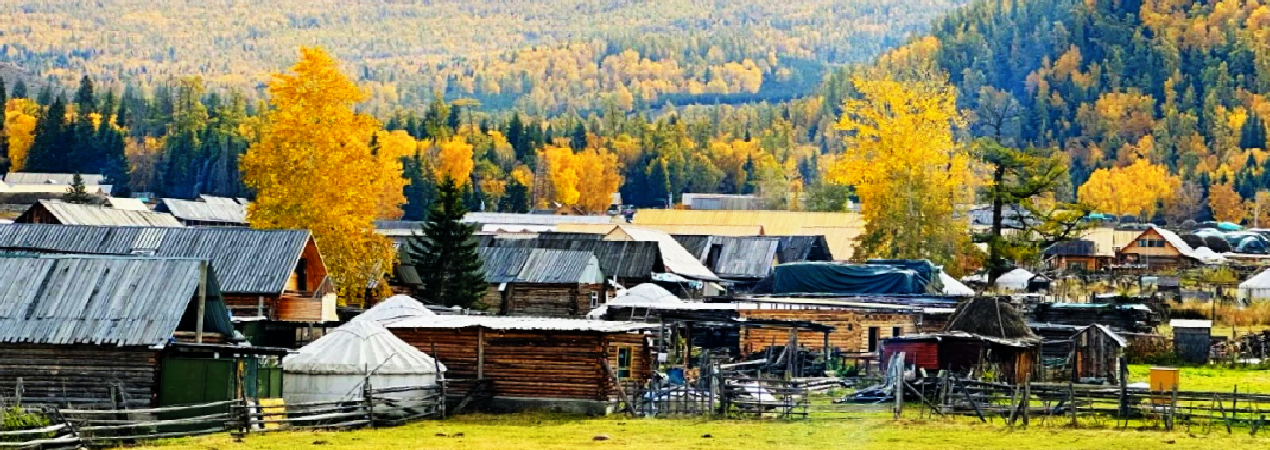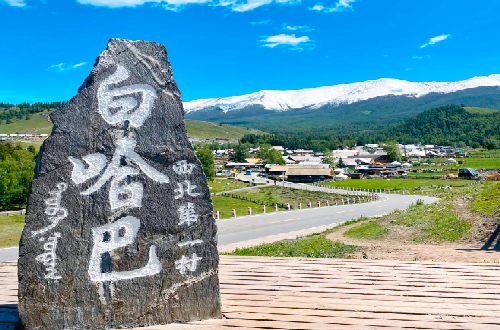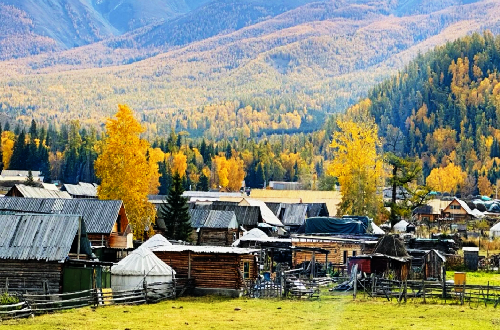Baihaba Village

Baihaba Village is a small hamlet inhabited by the Kazak and Tuva peoples. Located in Habahe County, Altay Prefecture, it is known as the "First Village of Northwest China." With its pristine natural scenery and unique folk culture, it has long been a popular travel destination.
- Chinese name: 白哈巴村 Bái Hā Bā Cūn
- Suggested time: 2 - 4 hours
- Ticket: The combined ticket and intra-zone shuttle bus fare is 75 yuan per person.
- Open hours: The opening hours are 8:00 - 20:00 from May 1st to October 15th every year, and 10:00 - 18:00 from October 16th to April 30th of the following year.
- The best time to visit: June - October
- Address: Terekty Township, Habahe County, Altay Region, Xinjiang Uygur Autonomous Region, China
- How to get there: Self-driving travel is recommended to reach the scenic area, but vehicles are prohibited from entering. You can take the scenic area shuttle bus. Since it is a border area, a border pass is required, which can be applied for free at the Kanas tourist service center. Remember to bring your valid identity document.
Highlights of Baihaba Village
Stone Stele
 Stone Stele
Stone SteleA stone stele stands northwest of the village, inscribed with "Baihaba" and "the First Village of Northwest China". Behind it lie the ancient village and stretches of birch forests. From here, you can capture panoramic views of Baihaba Village. In the early morning and evening, you may also see villagers herding cattle and sheep in and out of the village.
Sino-Kazakh Border Grand Canyon
It is a section of the Baihaba River Valley. The Sino-Kazakh Border Grand Canyon is extraordinarily spectacular and magnificent: the Baihaba River runs through the center of the broad and deep canyon, with graceful birch trees growing densely along both riverbanks and on the mid-lake islet, creating a beautiful landscape. In the depths of the canyon, the river twists and turns, while pine and cypress trees stand tall and thick, forming a quiet and beautiful environment perfect for relaxing the body and mind.
Houses in Baibaha Village
 Houses in Baibaha Village
Houses in Baibaha VillageThe houses in Baibaha Village are all pointed-roof log houses. The walls and ceilings are built with whole logs stacked and joined, and the top is supported by wooden boards, which can prevent rain and snow and ensure the safety of the houses. The village is full of quaint log cabins. There are rivers and trees beside the village, and several seasonal small snow-capped mountains behind it. The scenery is very beautiful. Every autumn, the leaves in the village are golden and brilliant, just like a fairy-tale world. It is a great place to enjoy the autumn.
Educational Value
All buildings in Baihaba Village are made of logs, with small log houses as the symbol, and have the characteristics of European villages. The walls and roofs of the houses are stacked and joined with whole logs, and the top is supported by wooden boards to form a "human"-shaped spire, which can prevent rain and snow to ensure the safety of the house. The spire between the ceiling and the roof is ventilated at both ends and is a place to store feed and air-dry meat. This kind of building has many advantages and is worth learning from.
Activities to do at Baihaba Village
Photography: At sunset in the evening, the snow-capped mountains opposite are dyed red, which is the golden moment for photography. In addition, Baihaba is close to the border, and there are also scenic spots such as the China-Kazakhstan boundary monument and the Chinese Forest around it, which are all rare places for photography.
Artistic creation: Baihaba Village has beautiful scenery, and you can do artistic creation such as sketching here.
Drop us a line and we'll connect you with the top China expert in no time!